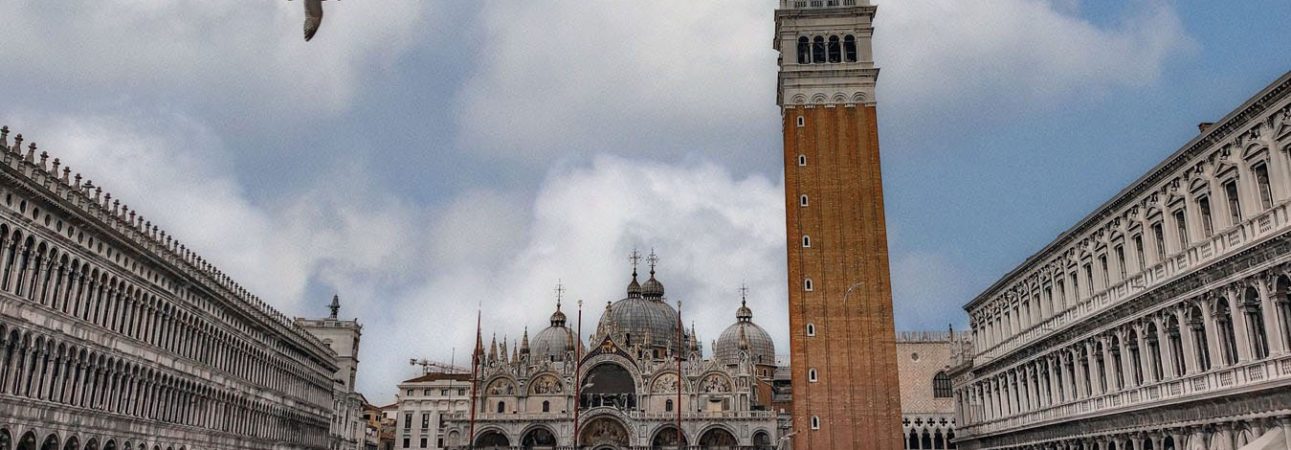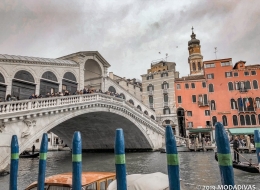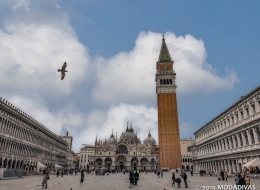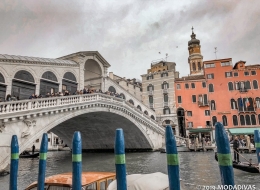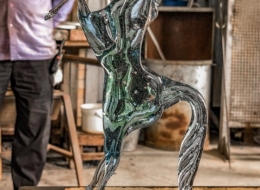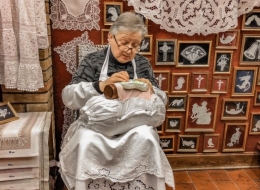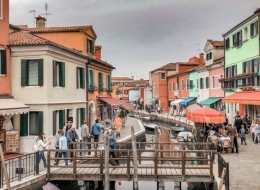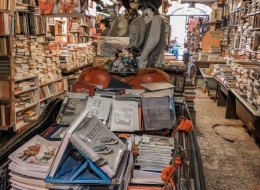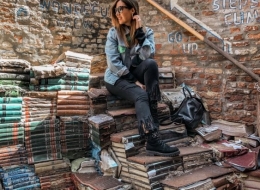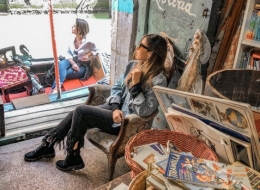by Giovanna Fusco
Traveling is part of me, it is by far one of the most beautiful things I can do and can advise anyone who decides to escape from the daily routine for a while. A few months after my last trip to Puglia, I decide to visit a destination that has always intrigued me, one of the most romantic and characteristic places we have in Italy: Venice, the city of canals, gondolas, Renaissance and Gothic buildings, of Byzantine mosaics, masks and cinema, a magical, almost fairy-tale city, unique in the world.
Three days available, a limited time, for a curiosity and a desire to discover unlimited. Hand luggage, documents, the essentials and so on, we start with a plane from Naples to arrive in the morning at the Marco Polo airport. I advise you, once you have landed, to choose between two options, both comfortable: at the airport exit you can buy a ticket to get to Piazzale Roma in 23 minutes with a shuttle bus, available on the site or directly there, and then get off and continue with the vaporetto service provided by the Alilaguna company, which makes several stops, including Piazza San Marco, where we stayed. Otherwise you can, from the airport itself, opt for a water taxi, offered by the Radiotaxi Artisan Cooperative, which will allow you to reach the city admiring the beauty of the surrounding landscape but which is certainly not very cheap; finally, you can choose the vaporetto service which, at the cost of fifteen euros, will take you to Venice in an hour and a quarter.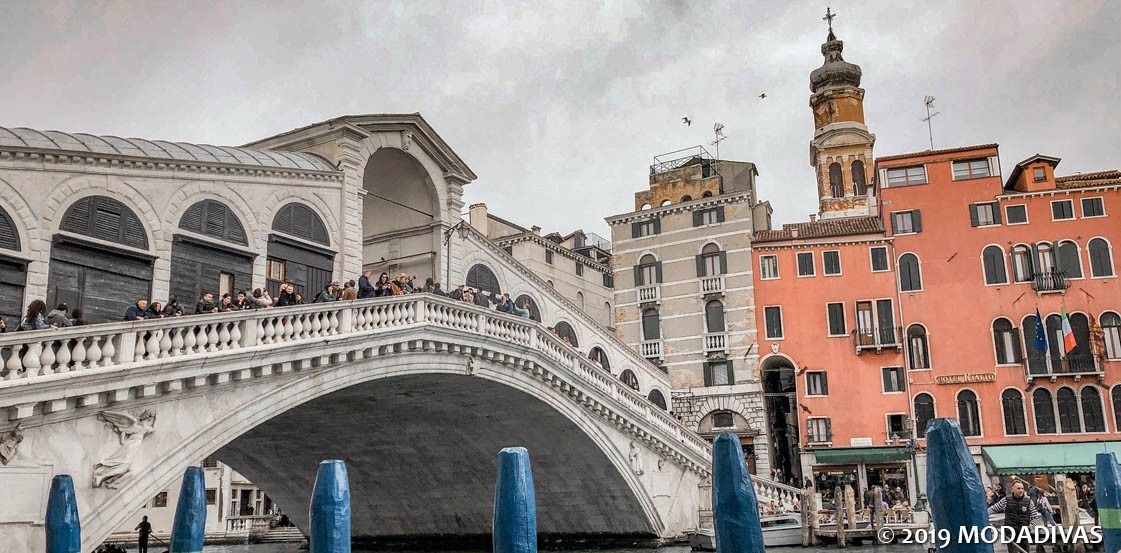 Piazza San Marco is one of the most beautiful and important squares in Italy and, for those not aware of it, it is the only Venetian urban space to which it is possible to give the name of piazza, because all the spaces in the form of a square in Venice they are called fields. It is certainly the symbolic area of the lagoon and is composed of three sectors: the Piazza, the Piazzetta San Marco and the Piazzetta dei Leoncini. Napoleon already defined the Piazza as the most beautiful reception area in Europe and, after seeing it, one can only agree with it: it literally takes your breath away. Originally it was actually an area for cultivation; in 1174 the canal was buried and in 1276 the square was paved with bricks. To date, it is the meeting place for anyone coming here, and for all those who wish to drink a coffee surrounded by so much beauty. Piazza San Marco is bounded by the Procuratie Vecchie and Nuove in the north and south; the closure of the Procuratie Vecchie consists of the Clock Tower, an imposing tower that marks the end of the square to the north. The Piazzetta San Marco, instead, is located between the Palazzo Ducale, formerly also Palazzo Dogale as the seat of the Doge, and the National Library, one of the most important Italian bookshops.
Piazza San Marco is one of the most beautiful and important squares in Italy and, for those not aware of it, it is the only Venetian urban space to which it is possible to give the name of piazza, because all the spaces in the form of a square in Venice they are called fields. It is certainly the symbolic area of the lagoon and is composed of three sectors: the Piazza, the Piazzetta San Marco and the Piazzetta dei Leoncini. Napoleon already defined the Piazza as the most beautiful reception area in Europe and, after seeing it, one can only agree with it: it literally takes your breath away. Originally it was actually an area for cultivation; in 1174 the canal was buried and in 1276 the square was paved with bricks. To date, it is the meeting place for anyone coming here, and for all those who wish to drink a coffee surrounded by so much beauty. Piazza San Marco is bounded by the Procuratie Vecchie and Nuove in the north and south; the closure of the Procuratie Vecchie consists of the Clock Tower, an imposing tower that marks the end of the square to the north. The Piazzetta San Marco, instead, is located between the Palazzo Ducale, formerly also Palazzo Dogale as the seat of the Doge, and the National Library, one of the most important Italian bookshops.
Our Hotel, Antico Panada, is located just a stone’s throw from the Piazza, 20 meters to be precise, in one of the historic alleys of the lagoon, Calle Specchieri, and since 1889 has been offering its guests the possibility of staying in relaxing rooms decorated with precious classic furnishings from the 1700s in Venice. One of the things to do absolutely in Venice is to walk among the streets, the streets that intersect the city and whose name derives from the Latin “callis”, which means path, path.
After a beautiful and regenerating walk, dinner time arrives and, two minutes on foot, we arrive in one of the typical Venetian trattorias: Al Gazzettino. I must and want to spend a few words for this place, with a warm, familiar, intimate atmosphere. Not having booked and, imagining having to wait, we kindly ask for a table for two, without too many pretensions and aware of having to wait, maybe even a lot: at the entrance, instead, we are offered a welcome drink and a taste of excellent gnocchi from to taste while waiting. Come in we sit and have a chat with the owner, super nice and helpful. The name “Al Gazzettino” stems from the fact that most of the regular customers were employees of the homonymous company, which had its headquarters not far from there and which soon became a gathering for gondoliers and porters. Today it is run by Margherita, a Venetian lady and fantastic cook, Ridha Bennefla, a sweet, thoughtful and polite owner and the creative son, Kabir, who decorates the whole interior with his drawings visible inside. One feels immediately at ease, as if it were a place known for ever and this thanks to the special dedication of the owners and staff, present and attentive. What about the dishes: the fish is very fresh, delicious. Some of the dishes to try are the spaghetti alla busara, typical of the lagoon cuisine and seasoned with a sauce prepared with scampi, garlic and fresh tomatoes, and tagliatelle with granseola, served in the shellfish shell. At the end of the courses they will always make you taste some excellent grappas accompanied by the typical sweets, the bussolai, made at home by Signora Margherita. Needless to say, we returned!
The next day, after a hearty breakfast, we are ready for one of the tours that I have always wanted to do: that of Murano and Burano. Tickets can be purchased at the cost of twenty euros in different corners near Piazza San Marco, because there are many agencies that deal with it, but I recommend buying them, maybe online, a fortnight before, so you can be safe. The tour includes a visit to these islands with a guide, absolutely necessary in order to understand what you see: the first stop is Murano, a center with 4,500 inhabitants and always known for glass, appreciated and loved all over the world. The history of glass is very ancient, it dates back to 1291, when it was decided that the Venice glassworks were transferred to Murano because the furnaces of the laboratories were often the cause of fires, given that at the time the buildings were mainly made of wood. We arrive right in front of a furnace where an ancient glass master is waiting for us who, with great manual skill and expertise, shows us all the steps that give life to the creations we know. In the same building two floors of wonderful creations: from lamps, to glasses, to magnets, to every kind of jewelry; it’s hard to resist their charm and leave empty-handed.
From Murano we move to Burano, a magnificent island famous for its roofs and colorful houses, known to all for the art of lace: it almost feels like being in another era! Once in Piazza Galuppi, the shop owners invite us to pay attention to the old ladies who calmly and calmly embroider and work lace. Here in Burano there is a rule: getting lost in the streets! Each lane is different from the other and every show is enchanting. All the houses are mostly square in shape and are divided into two or three floors; as far as their color is concerned, a legend tells that fishermen are said to have painted their houses so that they can be recognized from afar during the foggy days. In any case, whatever the truth, to date they have become one of the main features of the city, which makes it suggestive to the eye. Once the tour is over, return to Piazza San Marco, where I recommend taking a relaxing walk to the Rialto Bridge, one of the four bridges that crosses the Grand Canal, and take a nice aperitif with the famous Venetian cicchetti, similar with tapas, to be enjoyed next to a spritz.
The third and last day cannot miss a ride in one of the wonderful places that distinguish Venice: the Acqua Alta Library, one of the most famous bookshops in the world. It is a corner of creativity, culture, genius, which was born in 2004 from the idea of Luigi Frizzo, a native of Vicenza but of Venetian adoption. Inside, to fill it all up, you will find tanks, gondolas, canoes and a wonderful scale of books. To realize this last idea the manuals were not mistreated, but recycled, as each of them would have been thrown away. At the emergency exit another creepy glimpse: a window on the canals with chairs and a sofa to be able to observe the tide show from you. The bookshop, located in Calle Lunga Santa Maria Formosa, is open every day from 9am to 8pm.
Unfortunately the days have flown, but they have been unforgettable: how many beauties we have in Italy and how many things we often neglect for the desire to go elsewhere, when instead the wonders are often a stone’s throw from us. Even Venice, like many other magical places in Italy, represents a real gem, to be preserved and appreciated, because it is unique in the world.
Also this time I came back happy for what I knew and even more aware of how the journey is a great school of humility and openness to other cultures, perhaps the only one that makes us learn without boring.


